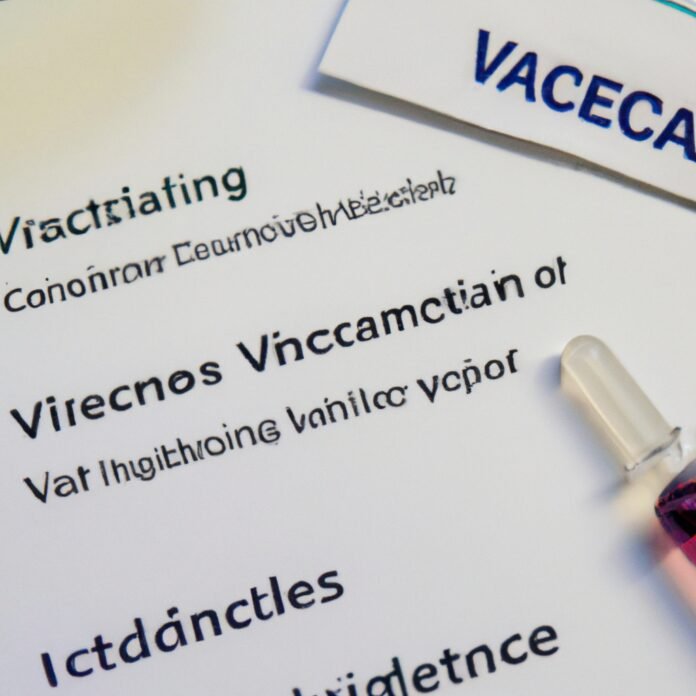As medical breakthroughs and scientific developments continue to evolve, we now have access to sophisticated vaccine formulations capable of protecting us from a range of illnesses. The success of these vaccines relies on the delicate balance of their components, and yet these crucial ingredients remain a mystery to many. So what do vaccine ingredients look like, and what roles do they play? Let’s explore.
1. Investigating Vaccine Ingredients: What You Need to Know
Deciding to vaccinate your children is an important choice. With the number of questions that surround the safety of vaccines, it may seem overwhelming when it comes to researching the ingredients used within them. To start, it’s vital to understand the basics.
Active Vs Inactive Ingredients
All vaccines contain both active and inactive ingredients. Active ingredients are what induces an immune response and the inactivated ingredients are the helper elements and are not infectious. Commonly, active ingredients are either weakened forms of a virus or bacteria, or proteins taken from the microorganisms. Inactivated ingredients can include various things such as preservatives, stabilizers, buffers, and enzymes.
- Formaldehyde – Preservative, used to detoxify viral and bacterial antigens
- Aluminum – Adjuvant, used to help your body improve the antibody response
- Thimerosal – Preservative, used to keep multi-dose vials free of bacteria and fungus
Despite rumors, there have been multiple studies conducted to also test the safety of these ingredients in relation to the distribution of vaccines. For example, formaldehyde is a common allergen that is used to detoxify many viral antigens used in vaccines. Studies have looked at increased levels in those children who have received multiple vaccines but failed to find any increased risk.
2. Deconstructing Vaccine Composition: Examining the Role of Each Part
Vaccines, though often seen as a one-size-fits-all solution, are actually complex mixtures of different substances. In order to fully understand what’s in a vaccine, it’s important to break down its key components to understand the role they all play.
Antigen is the primary ingredient in any vaccine. It’s a weakened or inactive form of bacteria or virus that helps the body to recognize a pathogen and build a defense against it. This is the key part of the vaccine that helps to create immunity.
In addition to an antigen, a vaccine may also contain preservatives such as thimerosal and sodium chloride which are used to prevent contamination in a multi-dose vial.
Other adjuvants can also be included to increase the potency of the antigen. Common examples are aluminum salts such as aluminum hydroxide and aluminum phosphate.
Finally, some vaccines may contain stabilizers to keep the antigen from breaking down. Stabilizers like gelatin or sugars help protect the antigen from exposure to temperatures that are too hot or too cold.
Understanding the different components and roles that each plays is critical when it comes to vaccine safety and efficacy. Without further research and analysis, the effects of each component on the immune system can’t be accurately known.
3. Removing the Mystery: Unravelling the Science Behind Vaccines
Vaccines are one of the greatest achievements of modern medicine and have saved countless lives, but how exactly do they work?
How Vaccines Stimulate the Immune Response
- A vaccine contains an antigen – either a weakened, inactive form of the virus or a piece of it – that the body recognizes as foreign and therefore dangerous.
- The body then goes into motion, producing antibodies to fight off the perceived threat.
- When the body is exposed to the virus again, it recognizes it as a threat and mounts a swift and powerful response, protecting against disease.
Vaccines are also incredibly important for protecting against diseases that may not manifest in the individual receiving the vaccine, but can still spread to vulnerable groups. Vaccines are essentially the body’s way of preparing for a potential threat it has yet to experience.
Live Attenuated vs. Inactivated Vaccines
- Live attenuated vaccines use a weakened form of a virus or bacterium, while inactivated vaccines contain dead pathogens.
- Live vaccines offer longer and more effective protection than inactivated ones, as they are close to the natural condition.
- The advantage of using inactivated vaccines is that they are safer and don’t have the potential of causing disease.
The science of how vaccines work is an incredibly complex yet remarkable process. By understanding the basics of how vaccines stimulate the immune system to develop immunity, we can appreciate how vaccines protect us and the people around us from diseases.
4. Exploring the Impact: Gaining an Understanding of Vaccine Ingredients
Vaccines contain much more than their headline ingredients. Investigating each vaccine’s components, from adjuvants to preservatives, further helps to understand the potential impact of a vaccine. These other ingredients are generally added to help stabilize, preserve, and otherwise ensure the safety of the vaccine.
Adjuvants are often included in vaccines to increase the body’s response to the vaccine’s active ingredients, which make the vaccine more effective. One of the most commonly used adjuvants being aluminum salts, such as aluminum chloride and aluminum phosphate. However, other adjuvants include oil-based or detergent-based solutions, which work as a delivery system for the antigen.
Preservatives are necessary to help keep bacteria or fungi from growing on the vaccine, which could create potential threats to those receiving the vaccine. Common preservatives used in vaccines are thimerosal and phenol. Thimerosal is a mercury-based compound that has been used since the 1930s and can still be found in some influenza vaccines. Phenol is generally used in multi-dose injection vials and is typically added in low doses.
Stabilizers are used in some vaccines to help maintain the original chemical structure of the vaccine. A very popular stabilizer, polysorbate-80, helps to maintain the antigen’s potency and helps prevent it from breaking down before it’s administered. Other stabilizers, such as monosodium glutamate, sucrose, and gelatin, can be seen in some vaccines.
Ultimately, understanding the various ingredients that have been added to the vaccine can help provide a better picture of potential risks and benefits of the vaccine. It’s important to look at all the components when determining what possible reactions could occur when receiving the vaccination.
5. Breaking Down Barriers: A Guide to Vaccine Components
Vaccines are a vital part of our society. With the world constantly changing, it is important to stay informed about the components that come with receiving a vaccine. Luckily, there is no need to be overwhelmed. Here is a guide to better understand and break down the components of a vaccine.
Inactivated or Live Virus Depending on what type of vaccine you receive, it could contain an inactivated or a live virus. Inactivated viruses are killed organisms, which usually result in fewer side effects. A live virus is composed of genetically weakened germs, resulting in the production of a stronger immune response – but its side effects could be a bit harsher.
Adjuvants Adjuvants are substances that help spark a stronger immune response. They are commonly added to vaccines in order to safely boost the effectiveness of the vaccine, making it a great choice for those with a weak immune system. A popular form of adjuvant is alum, which is formed from aluminum salts.
Preservatives In most cases, preservatives like thiomersal are used to extend the lifespan of the vaccine. They act as a safeguard, preventing anything from contaminating the vaccine, while making sure it stays safe. But it’s not just limited to thiomersal; other forms of preservatives such as phenol and sorbic acid have also been used.
Stabilizers Stabilizers are added to vaccines in order to protect them from the physical, chemical, and environmental changes. They provide an extra layer of security and prevent any decline in the antigen-quality of the vaccine. Common stabilizers used include sugars like sucrose and monosaccharides.
Vaccines are a powerful tool to protect us from potentially life-threatening diseases. By understanding the individual ingredients – and how they work together – we can engage in informed dialogue about the vaccine and their role in creating a healthier, safer world.

